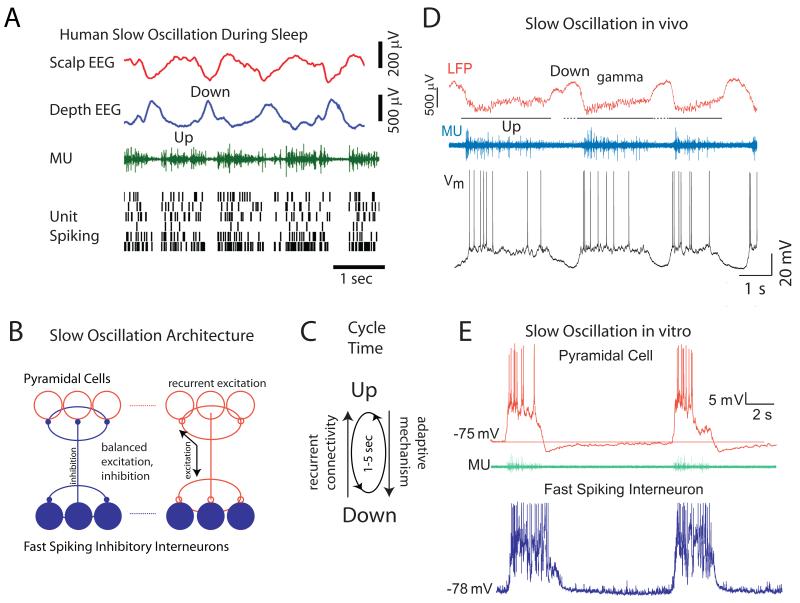Figure 2.
Network mechanisms mediating the generation of the slow oscillation. A. Slow oscillation is prevalent in the human neocortex during sleep. Local field and multiple unit recordings from implanted electrodes in the human cortex reveals Down states to be associated with cessation of network activity, while Up states are mediated by the persistent discharge of cortical networks. B. Schematic of the basic network architecture underlying the generation of slow oscillation. Fast spiking inhibitory interneurons contact one another and local pyramidal cells, while pyramidal cells contact both each other and local inhibitory interneurons. This architecture insures that inhibition is roughly proportional to excitation in the local network, promoting the generation of persistent activity. C. The presence of an adaptive mechanism (e.g. spike frequency adaptation; synaptic depression) results in “flips” between periods of activity (Up) and inactivity (Down), approximately once every second. D. Simultaneous recording of the local field potential, multiple unit activity, and intracellular synaptic/action potentials in a pyramidal cell during the generation of the slow oscillation in vivo. E. Whole cell recordings from a pyramidal cell and a fast spiking interneuron during the generation of the slow oscillation in vitro. A from [16]; C from [9]; D from [12].

